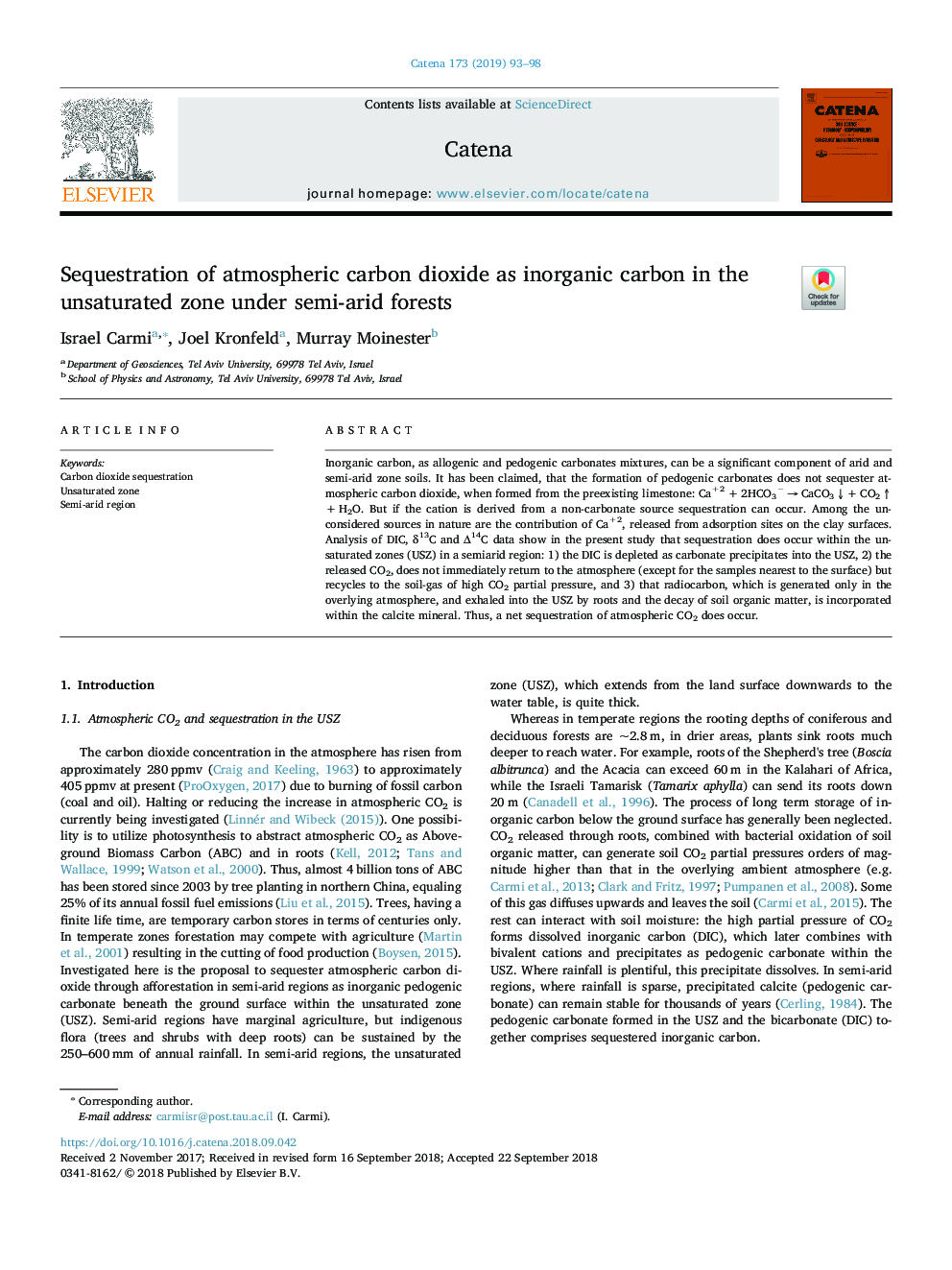| Article ID | Journal | Published Year | Pages | File Type |
|---|---|---|---|---|
| 11012962 | CATENA | 2019 | 6 Pages |
Abstract
Inorganic carbon, as allogenic and pedogenic carbonates mixtures, can be a significant component of arid and semi-arid zone soils. It has been claimed, that the formation of pedogenic carbonates does not sequester atmospheric carbon dioxide, when formed from the preexisting limestone: Ca+2â¯+â¯2HCO3ââ¯ââ¯CaCO3 ââ¯+â¯CO2 ââ¯+â¯H2O. But if the cation is derived from a nonâcarbonate source sequestration can occur. Among the unconsidered sources in nature are the contribution of Ca+2, released from adsorption sites on the clay surfaces. Analysis of DIC, δ13C and Î14C data show in the present study that sequestration does occur within the unsaturated zones (USZ) in a semiarid region: 1) the DIC is depleted as carbonate precipitates into the USZ, 2) the released CO2, does not immediately return to the atmosphere (except for the samples nearest to the surface) but recycles to the soil-gas of high CO2 partial pressure, and 3) that radiocarbon, which is generated only in the overlying atmosphere, and exhaled into the USZ by roots and the decay of soil organic matter, is incorporated within the calcite mineral. Thus, a net sequestration of atmospheric CO2 does occur.
Related Topics
Physical Sciences and Engineering
Earth and Planetary Sciences
Earth-Surface Processes
Authors
Israel Carmi, Joel Kronfeld, Murray Moinester,
